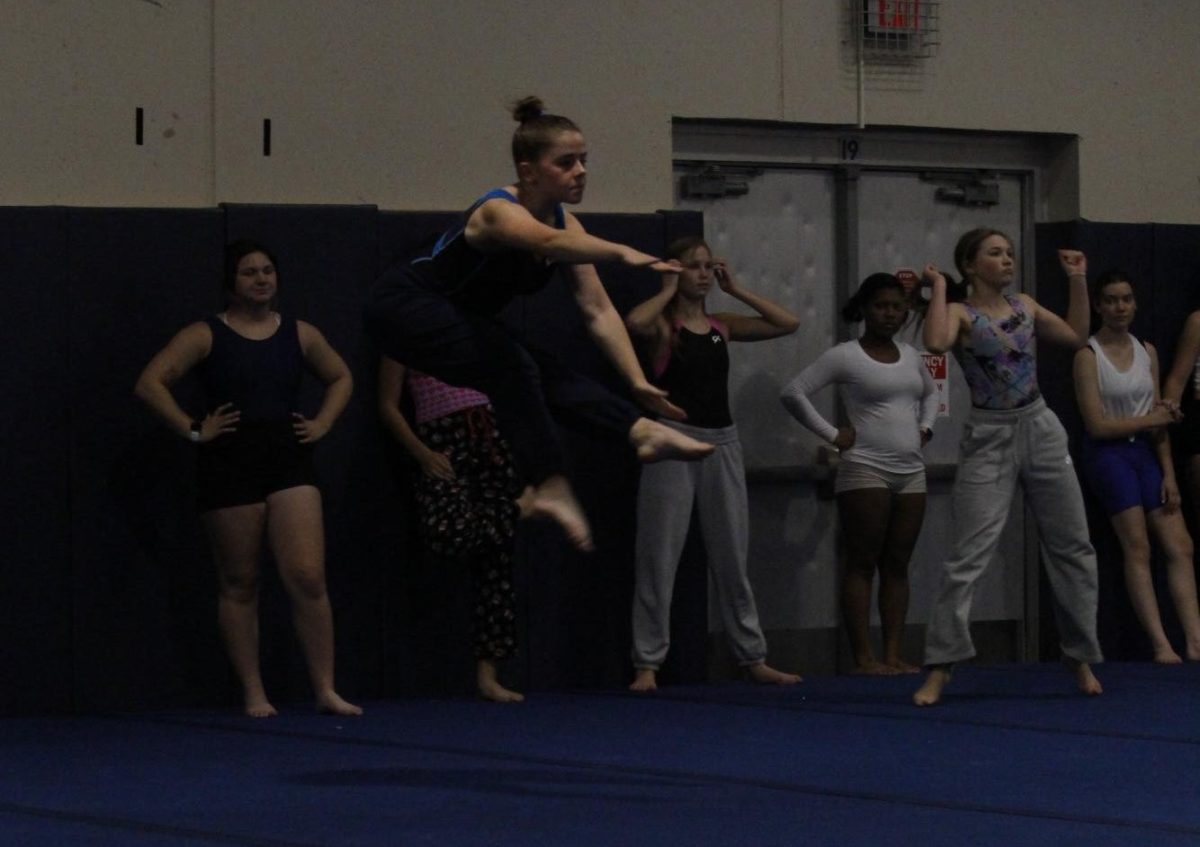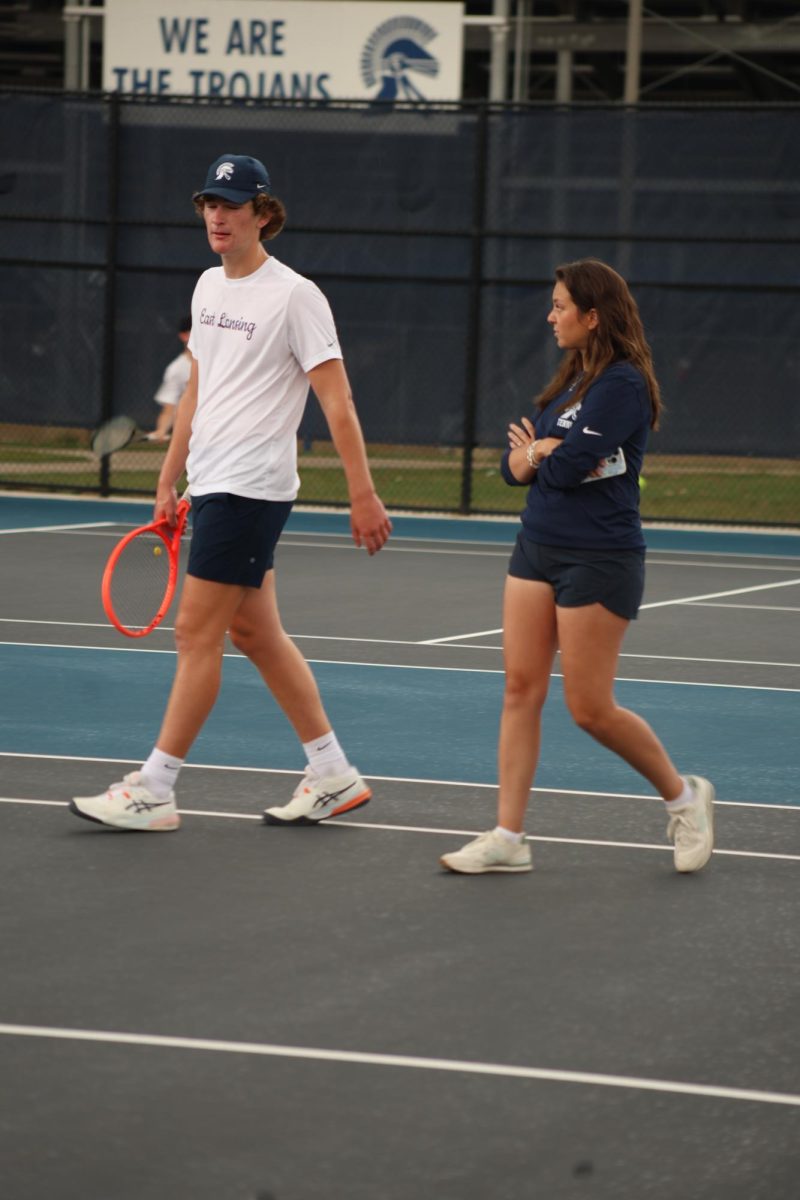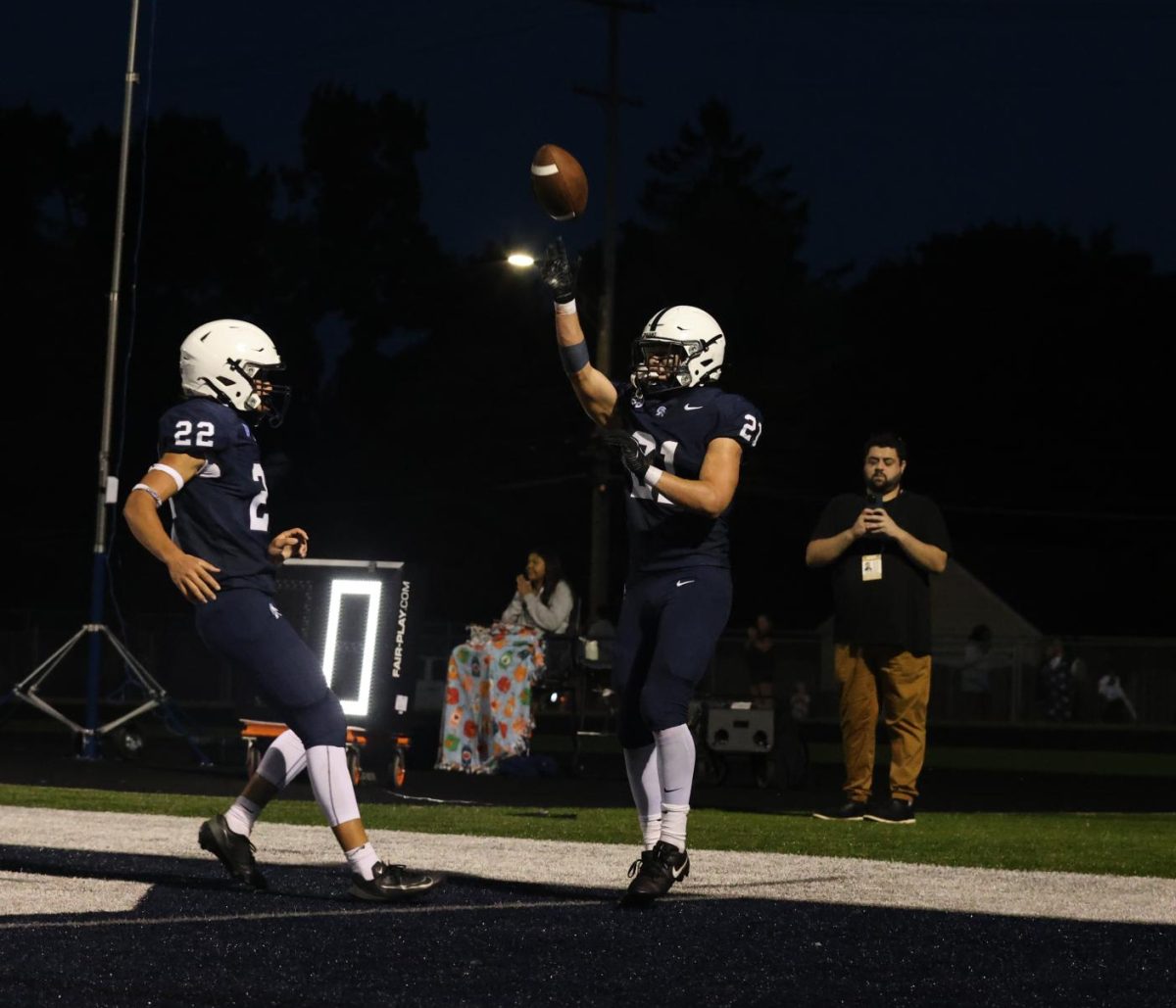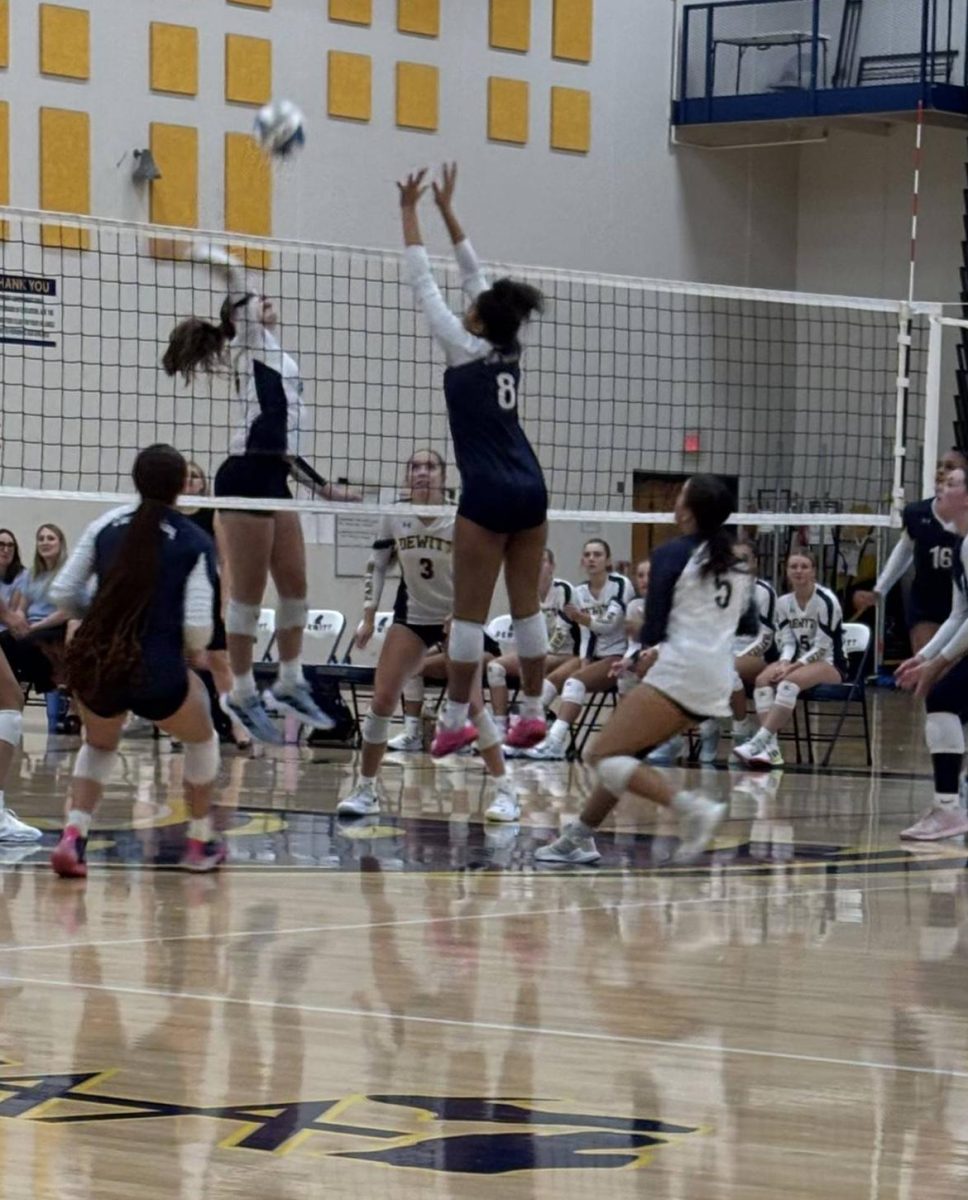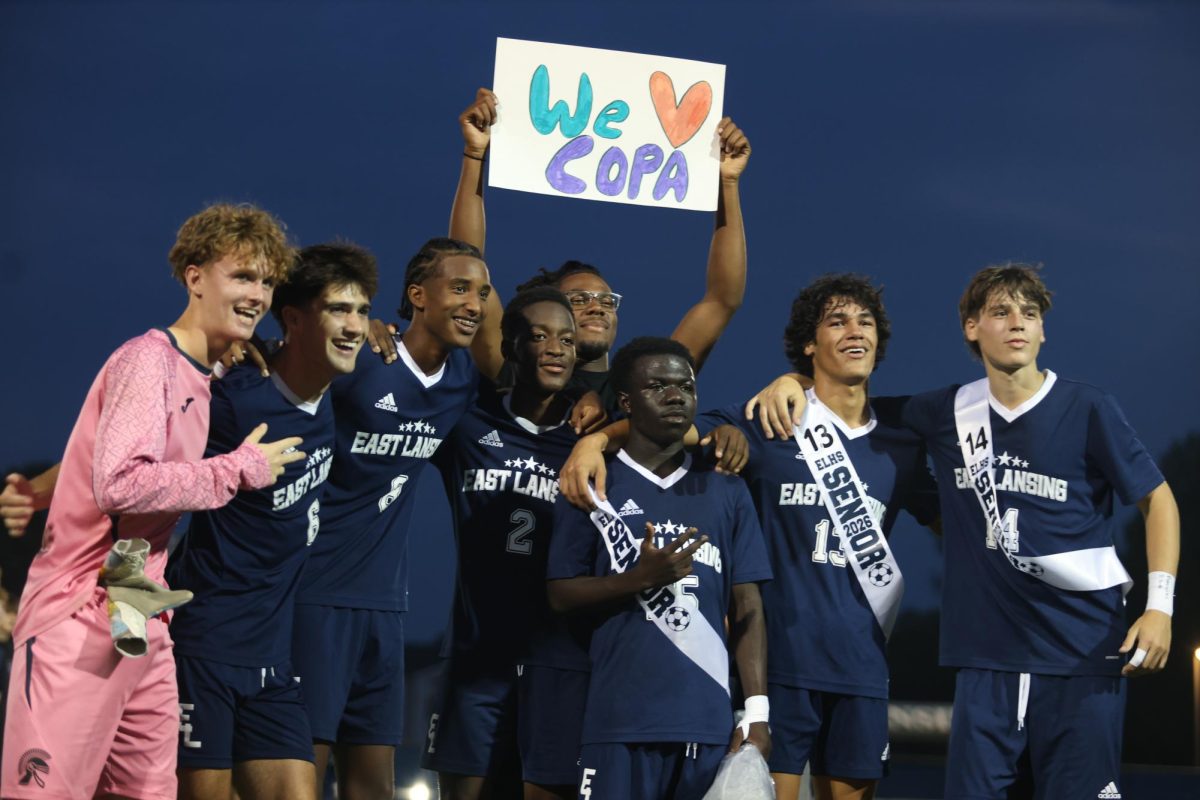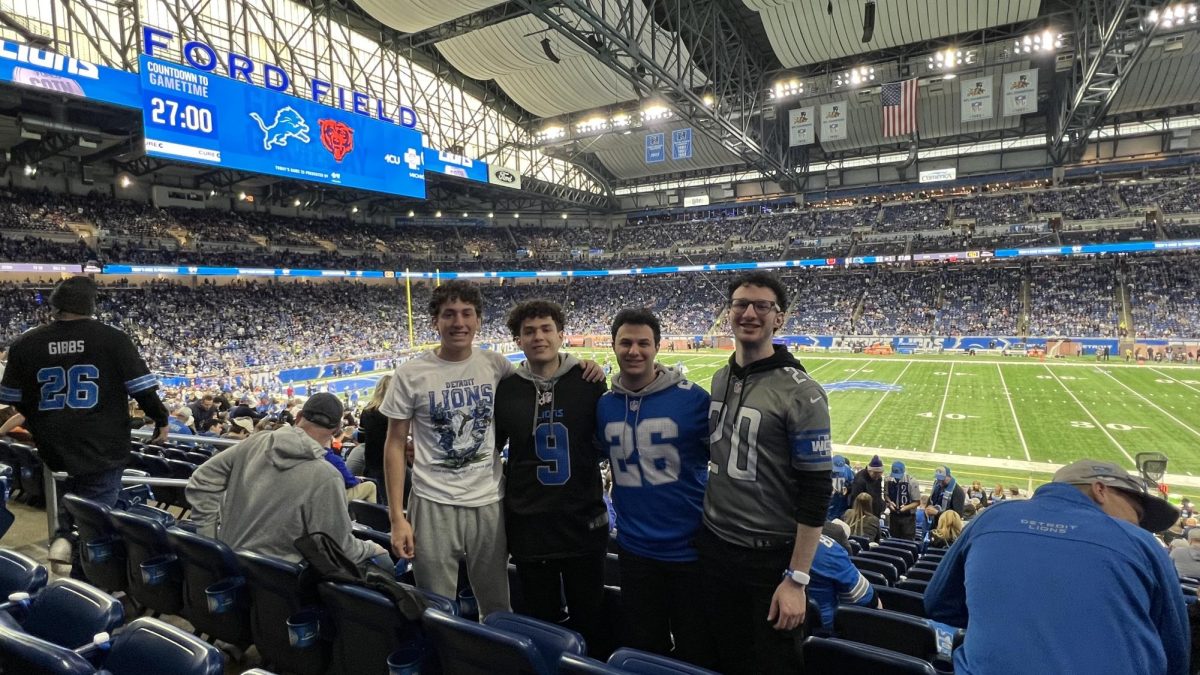As with all teams the gymnastics team kicks off the year with practice. However, coming into this season the team has a lot of new people competing with them. Training new gymnasts is a key goal of these preseason practices, which goes alongside making sure returners are able to get back to where they were before.
MHSAA sanctioned gymnastics is rather small, featuring only 52 total teams across the entire state. Club gymnastics is a major factor as to why there are so few teams at the high school level. For those who are of a certain skill level, a club team is often a better route into national, collegiate and olympic competition.
Due to a lack of interest in high school gymnastics, many of those 52 teams are co-ops, East Lansing included. This does not affect the team dynamic according to member of the gymnastics team Maggie Crowe (10), who has experience with standard teams as well as co-op teams.
“We are all part of a team, so it’s still the same dynamic. You just don’t see them around school,” Crowe said.
Last year the team had around 10 members, with only two of those being from DeWitt. However, this year with an expansion of the team to 15 members, captain Sarah Bollman (12) finds herself running into an interesting predicament. She needs to help these new members with their learning, and she still needs to train herself.
“We have to do a lot of basics in the first couple of weeks because most girls who come onto the team have never done gymnastics before,” Bollman said.
There is a large overlap between the cheer squad and the gymnastics team with a third of the gymnastics team also doing cheer. For many members of the team, gymnastics is a good way to make sure their cheer skills don’t get rusty because cheer only continues as long as football does, which can lead to skills for cheer like tumbling declining over the long off season. People like Crowe, who is a leader on the cheerleading team, need to make sure their skills are in working order for the season
“[I] do gymnastics to help with tumbling skills for cheer and it definitely helps,” Crowe said.
Oftentimes, meet preparation is the biggest pressure for gymnasts because the weeks leading up to competitions is one of the only times where performance can really hurt the team. When a person on the team can’t participate in a certain event, the team immediately loses 10 possible points. This can put a lot of pressure on gymnasts for their pre-meet performance. But that doesn’t shake Bollman.
“I don’t know, I guess [gymnasts] are just built different,” Bollman said.
To Bollman, the pressure on gymnasts is somewhat lighter than in other sports because the crowds are often much smaller. Additionally, poor performance only comes back at the person who performs poorly and doesn’t reflect on the team.
“It’s easier on my brain because I know nobody is counting on me like right now,” Bollman said. “[Football players] freak themselves out because, oh, we have to win playoffs. No one is counting on you gymnastics except for you.”
Bollman alongside many other members are looking forward to the bigger and better things that they will be doing this year as opposed to last. They will begin competition on January 10.
“I have a whole bunch of new skills that I learned over the summer and I’m really excited to put those into practice and competitions,” Bollman said.



